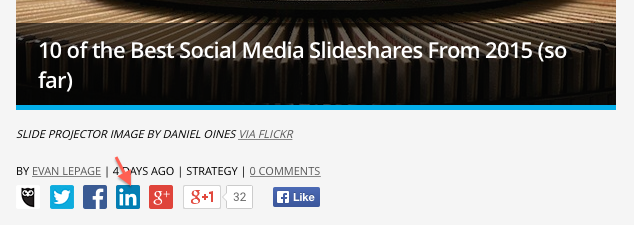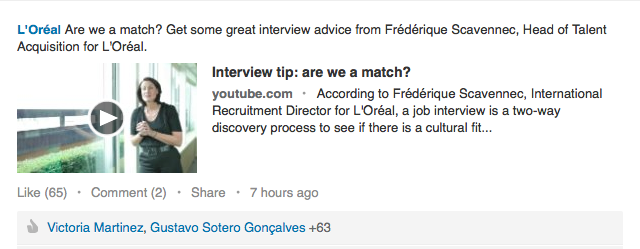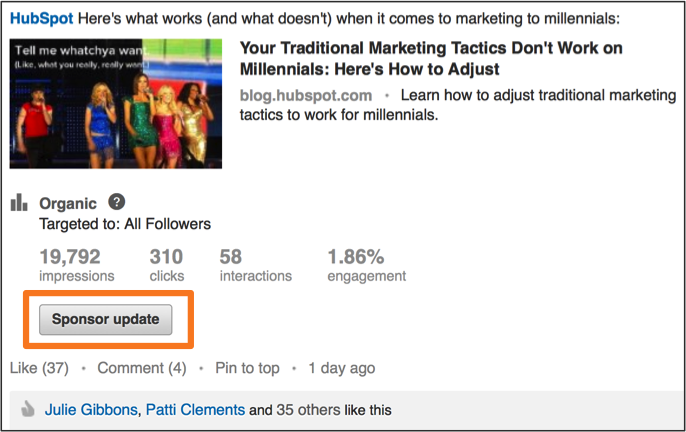In the pre-Internet Age (when dinosaurs roamed the Earth), job seeking was pretty much a one-way street. For all but C-suite positions, hopeful candidates lined up, presented their case in the least-quavery voice they could muster, and companies took their pick.
Now, the onus is not just on the candidate to woo their prospective employer. It’s more like the dating scene – it goes both ways. So, how do you land that ‘first date’ with new talent and new customers? Here are 7 key ‘takeaways’ drawn from some of LinkedIn’s top company pages to put you ahead of the other suitors.
1. Optimise your page for search
Companies often invest significant resources into optimising their websites for search but forget that their LinkedIn page is also a potential SEO goldmine. Every field in your company’s LinkedIn page is fair game for search bots, so make sure you include target keywords throughout (although note that the usual warnings about keyword ‘stuffing’ apply here too).

Marketo peppers its company description with keywords in a natural, unforced way.
2. Use images or rich media
Make your company’s status updates stand out by using images and – if you can – rich media. Also, don’t miss the opportunity to make the most of your banner space. This is a great opportunity to highlight your key selling points, or an upcoming event or product release.

Amazon uses its banner space to advertise that it’s one of LinkedIn’s most ‘inDEMAND’ employers.
3. Amplify your content
LinkedIn is a great channel for getting your brand exposed to a wider audience but it’s even better if you use other channels to promote your LinkedIn content. This could include your website, blog, e-newsletters, other social media platforms, and even asking your employees to share content on their own LinkedIn pages. Create email signatures for your employees linking to your company page and have your web developer incorporate LinkedIn ‘Share’ and ‘Follow’ buttons into your existing online channels.

Hootsuite features prominent social sharing buttons at the top of its blog pieces.
4. Craft updates for maximum engagement
It’s a no-brainer that you should share content that is useful to your audience. It’s okay to throw in the odd self-promotional piece but avoid being too salesy. If you wouldn’t feel comfortable to say it at a cocktail party, it’s probably best not to say it on LinkedIn either. Posting regularly is a good way to build your following. LinkedIn itself recommends at least one post per weekday, if you can manage it. Breaking up a large topic into a series and publishing at fixed intervals is another good way to get people to check back in to your page. Posting things like questions and quizzes can be good for encouraging audience participation but are best left until you have established a bit of dialogue on your page – no-one likes an awkward silence.

L’Oréal makes good use of questions to boost engagement with its LinkedIn page.
5. Get more targeted
Targeting your updates to specific subsets of your audience is a good way to make your content more relevant and build brand loyalty. LinkedIn’s Targeted Status Updates allow you to segment your audience based on geography, job function, industry, company size and seniority. Simply select ‘Target Audience’ rather than ‘All Followers’ when you post an update. One caveat here is that you must have at least 100 people in your targeted group. For super-personalised targeting, status updates can also be directed to individuals using @mentions. Type ‘@’ and then the name of the person (or company) in an update or comments box. You can only @mention people you are connected with in updates; in comments you can do it if the person has also left a comment.

6. Use Showcase Pages
Showcase Pages are another way to segment companies’ LinkedIn content for distribution to highly relevant audiences. Ideal for companies with diverse offerings, Showcase Pages allow you to highlight particular brands, services or business units. Unlike Targeted Status Updates, they have the advantage of their audiences being self-selected, i.e. LinkedIn members choose which aspects of your business they’re interested in following. Showcase Pages replaced LinkedIn’s old ‘products and services’ feature.

Dell has a number of sponsored pages, including Dell Security, Dell Services, Dell Cloud, Dell Software, Dell Mobile Solutions and Dell Healthcare and Life Sciences.
7. Boost your most popular content
LinkedIn offers a number of options for boosting high-performing content to further broaden your reach. If you’re just looking to maximise exposure for a piece of content within your existing follower base, you can pin an update to the top of your Recent Updates section. To do this, click on ‘Pin to Top’ at the bottom of the update. If you’re looking to expand your reach beyond your existing network, consider sponsoring select company updates. To maximise your return on investment, Sponsored Updates allow you to narrowly target your audience. You can limit by location, company name, company category, job title, job category, schools attended and LinkedIn groups.

Hubspot chose to sponsor this post as part of the beta testing for Sponsored Updates.
Bonus tip: Post long-form content
This one is not officially part of the ‘secret seven’ because it’s technically not available to company pages at this point. However, it’s worth a mention because you and your employees or colleagues can post long-form content from a personal LinkedIn Page. The beauty of long-form content is that it has the ability to position you (and by extension, your company) as a thought-leader in your field. It also gives your existing long-form content another avenue for exposure. The key is to include some sort of hook at the end of the post to drive people back to your website and potentially generate leads – for example, a related whitepaper download or tool. At the very least, you should include a bio with a link back to your site. If you’re re-posting a piece from your website, try to vary it a little (e.g. change the headline, make it shorter) to avoid duplicate content issues.
As with any social media platform, there is no ‘set and forget’ solution to maintaining a killer LinkedIn company page. The trick is to keep your page dynamic and update it regularly. After all, a static LinkedIn presence is about as effective in luring new talent (or clients) as a shoe-shine is to landing that date.
Read the original post at Powercontent.com.au
